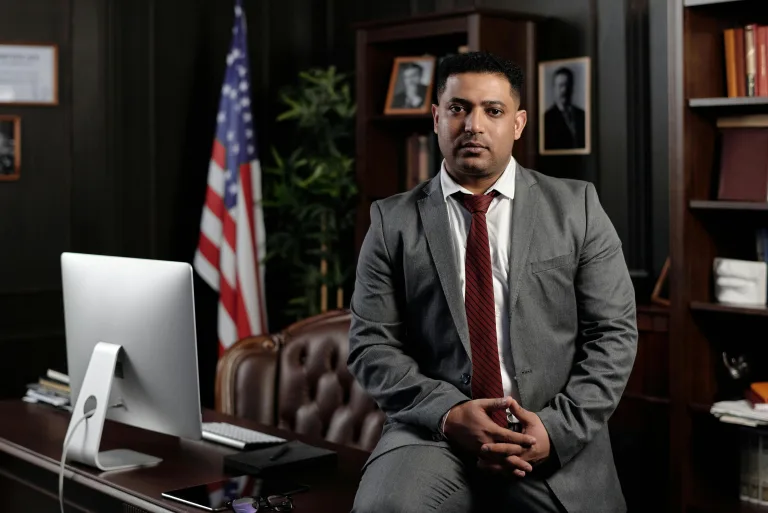Psychology, Social Work, and the Hidden Aftershocks of Disaster
Have you ever stopped to think about what happens after the rescue teams pack up and leave a disaster site? Not to the roads or the buildings, but to the people—their fear, their shock, their silence. When the media coverage ends and the cleanup begins, a different kind of crisis sets in. It’s quiet. Internal. Long-lasting. And often ignored.
That’s where psychology and social work come in. They don’t just respond to broken systems—they help mend broken people. In this blog, we will share how psychology and social work help people heal after disasters, why emotional recovery is often overlooked, and how education programs are rising to meet this urgent need in the real world.
The Mental Fog After the Fire
Trauma doesn’t follow the cleanup schedule. Long after roads are cleared, people may still feel unsafe—kids can’t sleep, teachers can’t return, and communities show signs of emotional strain. These quiet aftershocks—missed routines, rising anxiety—don’t make headlines, but they shape how people recover and rebuild.
Mental health challenges spike after disasters. The World Health Organization estimates that one in five people in post-crisis settings experience some form of mental health disorder. That means even small towns hit by hurricanes or wildfires could face a wave of invisible suffering. And without trained professionals on the ground, that wave hits hard.
This is where social workers and mental health counselors make a difference. But here’s the problem: we don’t have enough of them. Not in schools. Not in shelters. Not in rural clinics. That gap leaves people to deal with trauma on their own, which can snowball into long-term health issues, relationship breakdowns, or worse.
To meet this growing need, many students are turning to the fastest online MSW programs to train quickly and enter the field. These programs are designed to prepare people for real-world challenges without forcing them to spend years on campus. Students can keep working, stay with their families, and still get the credentials they need. It’s not just about speed. It’s about access. About training more people, in more places, who understand both the theory and the practice of trauma care.
These online programs also reflect a wider trend. Mental health is no longer treated as an afterthought in public health discussions. Schools are hiring more counselors. Hospitals are building behavioral health wings. The shift is slow, but it’s happening.
Psychology Explains the Reaction, Social Work Shapes the Recovery
Psychologists help us understand what trauma does to the brain. Why people shut down or lash out. Why memory gets fuzzy. Why survivors sometimes feel guilty for making it out alive. These insights are crucial. They show us that responses to disaster aren’t irrational—they’re human.
But psychology alone can’t solve everything. Understanding fear doesn’t feed a child. Naming trauma doesn’t house a displaced family. That’s where social work takes the baton. It turns insight into action.
Social workers work with systems—schools, courts, housing authorities, shelters. They know how to help people navigate chaos without getting lost in paperwork or stigma. They’re trained to connect individuals to resources, build safety plans, and intervene before someone ends up in crisis again.
For example, after the 2023 Maui wildfires, the Hawaii Department of Health, along with state partners, responded by expanding clinic hours and providing crisis mental health services to support wildfire survivors. That’s the kind of flexibility and cultural responsiveness the field needs more of.
And here’s the truth: the demand is only growing. Climate disasters are getting worse. Mass shootings haven’t stopped. Public health systems are under strain. And each of these events has emotional consequences. If we only focus on the physical side of emergencies, we miss the deeper damage.
Training the Right People in the Right Way
If we want better disaster recovery, we need to train people who understand both minds and systems. And we need to train them fast. That’s why education programs must evolve.
Accelerated social work degrees are part of that evolution. They’re designed for people who already have experience or relevant degrees and want to specialize quickly. The coursework focuses on high-impact areas like trauma-informed care, crisis intervention, and community resilience.
But fast doesn’t mean easy. These programs are intense. Students juggle field placements, research, and remote learning—all while dealing with real-world challenges. That kind of pressure prepares them for the field. Because let’s be honest: disaster work isn’t slow or predictable.
Online training also allows programs to reach students in underserved regions. Think small towns with one clinic and no counselor. Think reservations, rural school districts, or border communities. With the right technology, these programs can train the next wave of responders exactly where they’re needed most.
The Stigma Is Still a Problem
Despite all the progress, many people still think of trauma support as a luxury. Something you deal with after everything else is taken care of. But that mindset delays healing. It also reinforces the idea that emotions are weak or unimportant.
In reality, untreated trauma affects physical health. It increases the risk of heart disease, diabetes, and chronic pain. It affects decision-making, parenting, and even job performance. Ignoring it doesn’t save time or money. It just shifts the burden to another system—usually one that’s already overwhelmed.
The solution isn’t just more counselors. It’s smarter planning. When cities and agencies build disaster response plans, mental health support needs to be part of the first wave, not the last one. That means embedding professionals in shelters, deploying mobile units, and using telehealth services to reach isolated populations.
This Isn’t Just About Disasters
The truth is, you don’t need a hurricane to have a mental health emergency. For some families, eviction is the ultimate disaster. For others, it’s a job loss, a car crash, or a death in the family. The same principles apply: emotional support matters, and trained professionals can make the difference between recovery and long-term harm.
That’s why investing in psychology and social work education is not just a response to crisis—it’s a form of prevention. When we equip more people to recognize the signs of trauma, offer support, and guide recovery, we make communities stronger before anything even happens.
So the next time you hear about a disaster, ask yourself this: who’s helping after the noise dies down? Who’s listening when no one else is watching? Chances are, it’s someone trained to see the hidden aftershocks—and ready to do something about them.
https://www.who.int/news-room/fact-sheets/detail/mental-health-in-emergencies





